Navigation
Install the app
How to install the app on iOS
Follow along with the video below to see how to install our site as a web app on your home screen.
Note: This feature may not be available in some browsers.
More options
Style variation
You are using an out of date browser. It may not display this or other websites correctly.
You should upgrade or use an alternative browser.
You should upgrade or use an alternative browser.
China Auto Thread
- Thread starter StraightEdge
- Start date
Yommie
SpeedLimited
- Oct 2, 2013
- 64,174
- 37,188
- Country of Origin

- Country of Residence

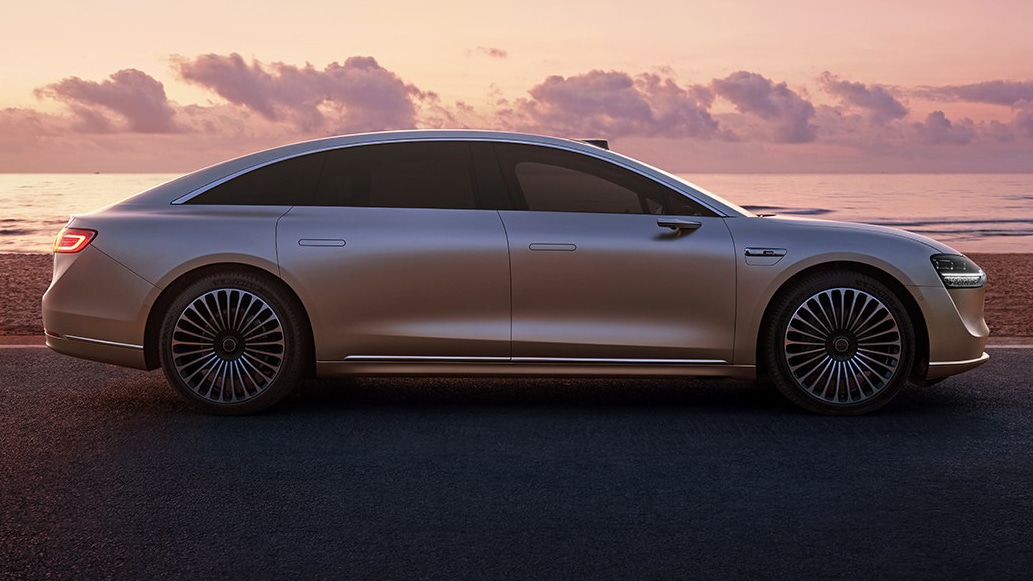
New sedan from BAIC and Huawei to sell for half a million yuan
Stelato S9 an electric sedan from BAIC and Huawei to sell for half a million yuan
 carnewschina.com
carnewschina.com
New sedan from BAIC and Huawei to sell for half a million yuan
Reading Time: 4 minutes
Mark Andrews
March 15, 2024
6
 BAIC Huawei Stelato S9 electric sedan
BAIC Huawei Stelato S9 electric sedanNews like this to your inbox or phone?
Weekly summary to your inbox
I want this
Never miss and important news
Get Instant notification once the news is published.
Follow Us
Top line models of the new Stelato S9 will likely sell for around 500,000 yuan (69,500 USD). The sleek sedan is the first model under the Stelato brand a collaborative venture between BAIC New Energy and Huawei and is the latest attempt by an SOE to produce a premium EV brand.
We first brought you news of the new brand, called Huazhang in Chinese, last year. The S9 which is called Xiangjie S9 in Chinese was previously known by the internal code name X4. It is a large fully electric sedan with dimensions of 5160/1987/1486 mm (l/w/h), and the wheelbase is 3050 mm.
China’s Ministry of Industry and Information Technology (MIIT) filings cover three versions and show there are two power options. Single motor versions use a 227 kW TZ210XYA03 electric motor produced by Huawei Digital Power Technology Co., Ltd., on the rear axle. Filings show that there are two versions with the single motor configuration. Dual motor versions add a YS210XYA03 motor also from Huawei to the front axle, this motor is rated at 158 kW. Batteries are believer to be NCM but the capacity of the packs is not yet known.
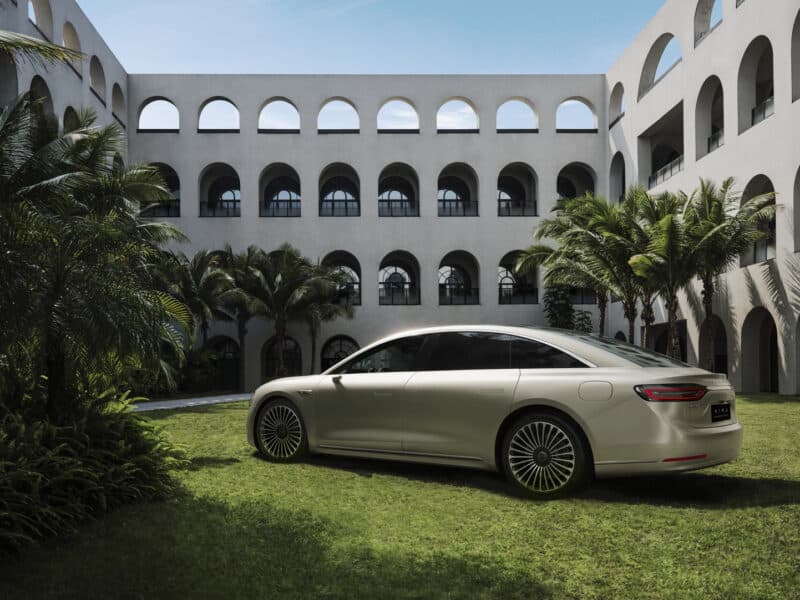

Size wise the car very much competes with long wheelbase versions of the BMW 5 series, Mercedes E-class, and Audi A6L. Most of the technology of the car comes from Huawei and Beijing New Energy is currently one of four companies that have collaborated with the Chinese electronics giant. This venture however seems to be the most upmarket to date.
The front face is equipped with Huawei’s xPixel headlight system and combines functions such as wide light blanket, intelligent welcome, and 100-inch outdoor projection. Sensors including Lidar also come from Huawei.
While the official shots in the MIIT listing show the Stalato S9 with conventional side mirrors we can see that cameras are an option. Such cameras increase the view and avoid blind spots.
Not only does the exterior look like a scaled up a Luxeed S7 (a sedan produced by Huawei and Chery) but the interior is also similar as well. There is a large horizontal central control screen powered by the HarmonyOS 4 along with a dual 50W wireless phone charging pad. The cabin seems to be tastefully wrapped with wood and leather. Spy shots however seem to show the Huawei’s 75-inch augmented reality HUD is missing from the car.
Stelato S9 interior spy shot
The car rides on an ungraded version of BAIC’s BE22 platform. Prices are likely to range from 300,000 to 500,000 yuan (41,700 to 69,500 USD). Expect to see the Stelato S9 at the Beijing Auto Show next month. Sales will be through Huawei stores.
Editor’s note:
BAIC were at one time one of the leaders in EVs thanks to conversions of ICE cars for use as taxis and ride hailing cars but the company never really managed to adapt to the take up of EVs by private consumers. Last year BAIC New Energy only managed to sell 92,172 cars including the contribution from Arcfox.It is difficult to see what BAIC will get from this car other than some profit producing the car if it is going to be sold through Huawei sales channels. As mentioned in the article the car looks like a scaled up Luxeed S7 which is produced by Chery and both cars carry prominent new brand names.
It should be noted though that the Beijing Auto Group is no stranger to trying to produce large luxury sedans. Before Hongqi became the car of choice to China’s leaders the Beijing CB4 was in the running before ultimately losing out.
Source: MIIT, Autohome, Fast Technology
Yommie
SpeedLimited
- Oct 2, 2013
- 64,174
- 37,188
- Country of Origin

- Country of Residence


MG Cyberster Red Top Edition hits showrooms in China
MG Cyberster Red Top Edition brings a pearl-white body paired with a red roof made from imported custom fabric
 carnewschina.com
carnewschina.com
MG Cyberster Red Top Edition hits showrooms in China
Reading Time: 4 minutes
Adrian Leung
March 16, 2024
0

News like this to your inbox or phone?
Weekly summary to your inbox
I want this
Never miss and important news
Get Instant notification once the news is published.
Follow Us
The MG Cyberster Red Top Edition hit the showrooms in China after its initial announcement back in January. It is offered priced at 365,800 yuan (50,900 USD). It has the same specifications as the top trim Cyberster AWD 520. The 6,000 yuan premium price tag brings a unique pearl-white body paired with a vibrant red convertible roof made from imported custom fabric giving the MG Cyberster a retro appearance.
It pays tribute to MG classic sports cars: MG-A (1956), MG-B (1967), and MG Magnette (1958) also released in the same color scheme. The initial release of the Red Top Edition comprises 100 units.
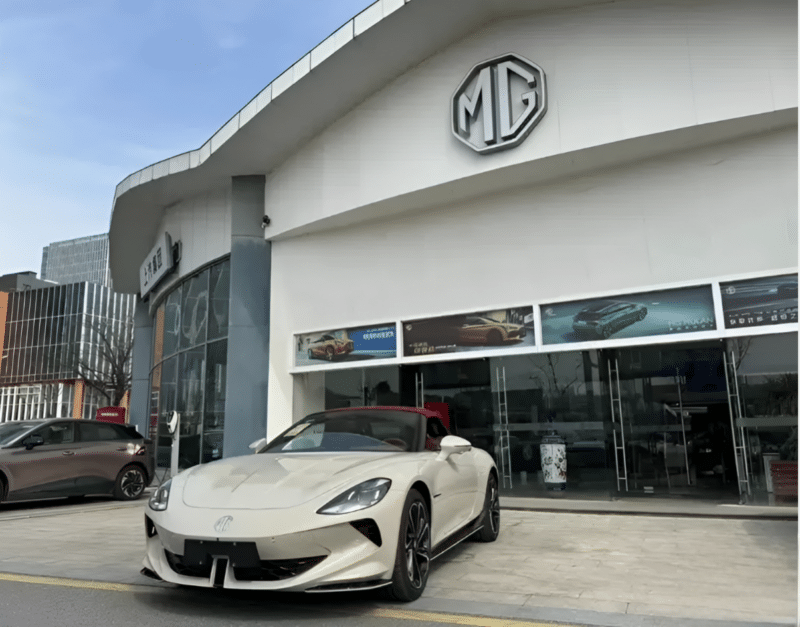
Unlike other convertible sports cars, besides being fully electric, the MG Cyberster’s roof can be opened/closed in 10 seconds when driven, as long as the car is traveling below 50 km/h. Also, its scissor doors have not been used in sports cars in the same category. Weighing in at around two tonnes the Cyberster uses Brembo brakes with four-piston fixed calipers and a robust roll bar, ensuring safety measures for its occupants.

The Cyberster’s chassis tuning is handled by the Italian DANISI team, previously associated with the F1 Ferrari team. The dimensions of the Cyberster are 4,534/1,913/1,329 mm, and with a wheelbase of 2,690mm, the Cyberster stands notably larger than its main competitor in the same price range, the Mazda MX-5 Miata. The Cyberster achieves a weight distribution of 49:51 weight ratio with a drag coefficient of 0.269cd. It has a low center of gravity height of 440mm, coupled with front double wishbone and rear multi-link independent suspensions.
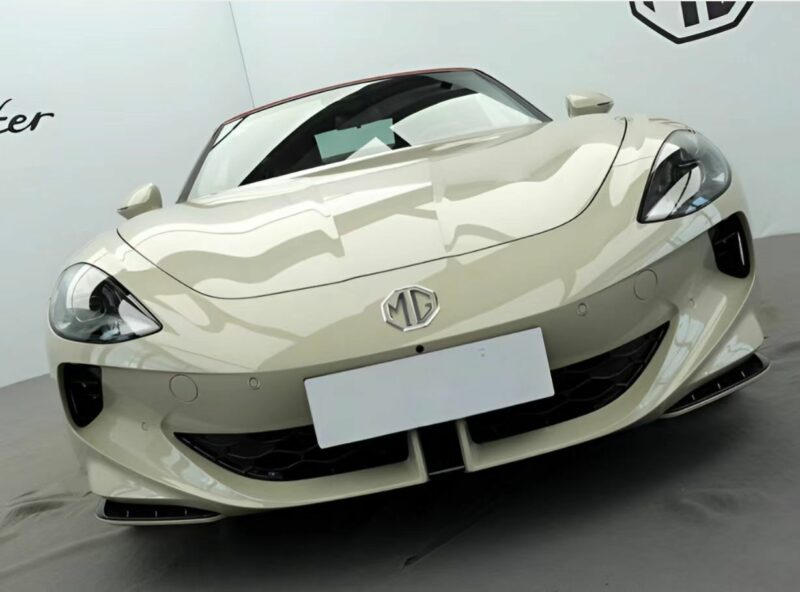
Underneath its nostalgic exterior, the Cyberster Red Top Edition maintains the mechanical specifications of the top trim Cyberster AWD 520. This model includes a front permanent magnet synchronous motor generating up to 150 kW of power, along with a rear motor producing 250 kW. With a combined power output of 400 kW, the car can accelerate from 0 to 100 km/h in just 3.2 seconds. It is equipped with a 77 kWh battery, offering a CLTC range of 520 km.


As MG’s heritage, the Cyberster continues its classic design elements, with a distinctive side profile and a cockpit featuring Nappa leather seats and a carbon fiber central panel. Above the steering wheel, you will find an instrument cluster that consists of three LCD panels assembling a video game environment. It has a Bose sound system. The cockpit is powered by Qualcomm Snapdragon 8155 chip which is lagging behind other manufacturers. At half the cost of the Cyberster, the Leapmotor C10 uses a more advanced chipset, the Qualcomm Snapdragon 8295 chip, offering a smoother and faster user experience. It is one thing we like to see an update on the Cyberster.
MG traces its roots back to Oxford, England, where it was established in 1924. Over the years, the brand transitioned and is now under the ownership of SAIC Motor Corporation. MG Cyberster made its debut at the Goodwood Festival of Speed in July 2023. MG officially announced that it will take over from Porsche as the ‘Central Display Partner’ (the main sponsor) of the 2024 Goodwood Festival of Speed.
The MG Cyberster achieved sales of 676 units within the first 100 days of its release in China, making it one of the best-selling sports cars for three consecutive months. In 2023, MG’s global sales reached 840,000 vehicles, earning recognition from users in over 100 countries and regions. In 2024, as MG celebrates its 100th anniversary, the brand aims to challenge the goal of 1 million global sales, celebrating MG’s birthday with 1 million vehicles.
Source: Autohome
Yommie
SpeedLimited
- Oct 2, 2013
- 64,174
- 37,188
- Country of Origin

- Country of Residence

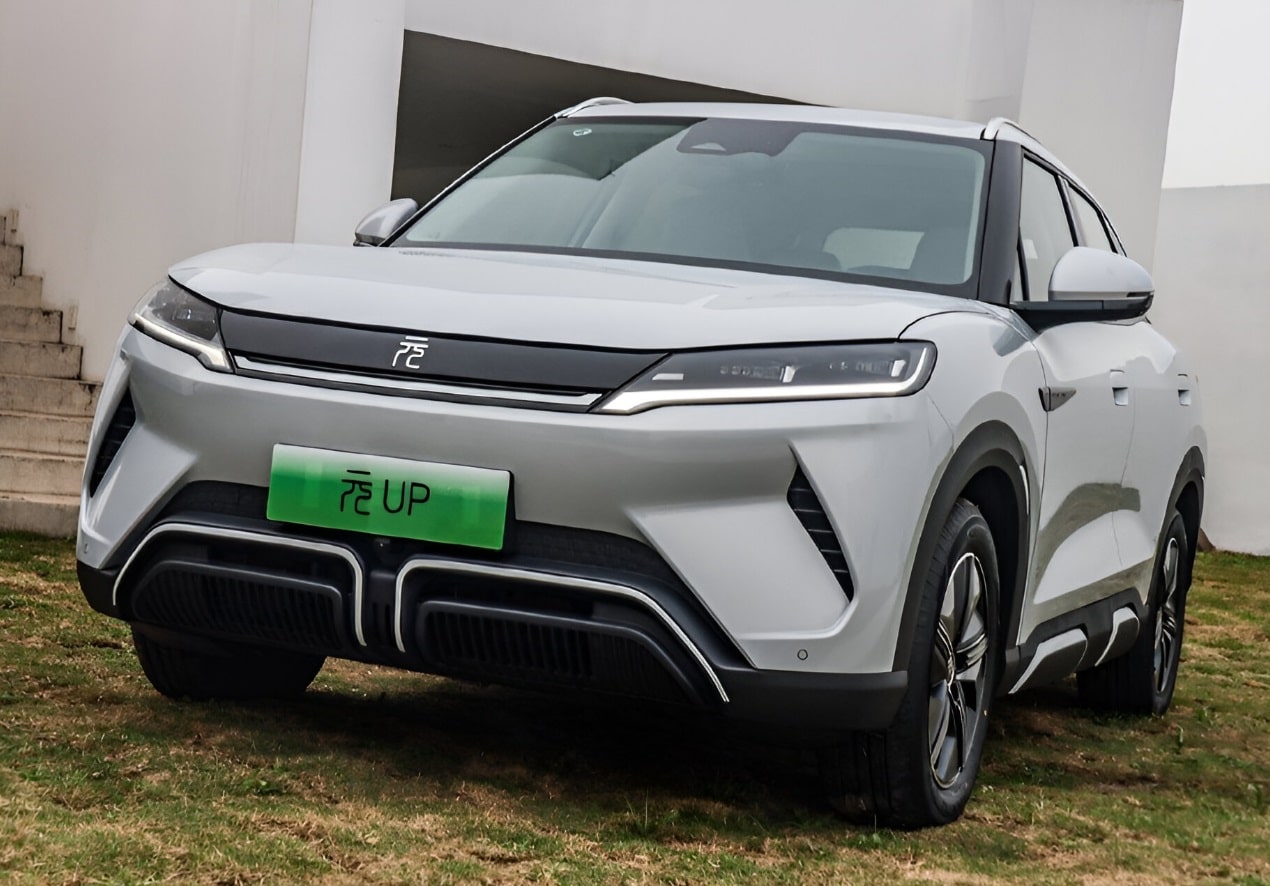
BYD Yuan UP launches on March 19, starting at 11,000 USD
BYD Yuan UP, a compact crossover, to launch on March 19
 carnewschina.com
carnewschina.com
BYD Yuan UP launches on March 19, starting at 11,000 USD
Reading Time: 3 minutes
Adrian Leung
March 16, 2024
3
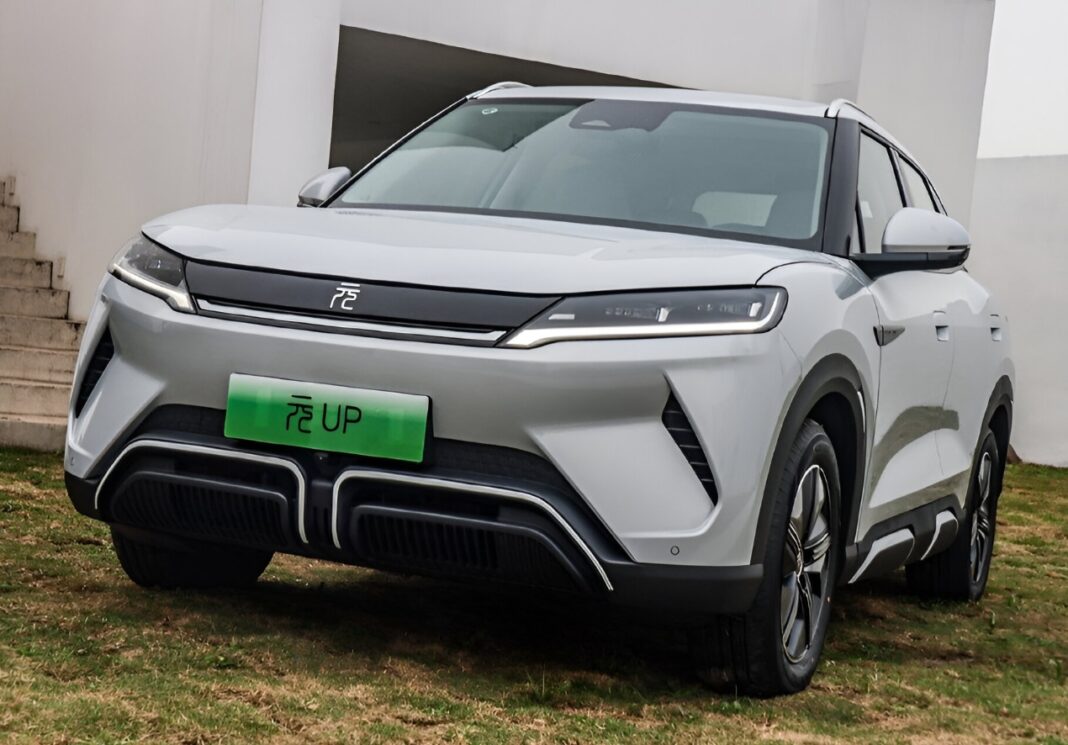
News like this to your inbox or phone?
Weekly summary to your inbox
I want this
Never miss and important news
Get Instant notification once the news is published.
Follow Us
BYD is preparing to unveil its latest addition to the Dynasty series with the launch of the Yuan UP. It will debut on 19 March with an expected starting price of 79,800 yuan (around 11,000 USD). Similarly priced as the BYD Destroyer 05 Honour Edition (Chaser 05 / Chazor / King DM-i in overseas markets).

Yuan UP continues the Song L design language, it showcases a “dragon face” according to BYD, with a black trim encircling the car. Notably, it features semi-concealed door handles and a “floating roof”. The Yuan UP is designed more for urban driving than rugged terrains. It falls into the crossover vehicle category, akin to models like the Kia Soul, but with a more curved design.
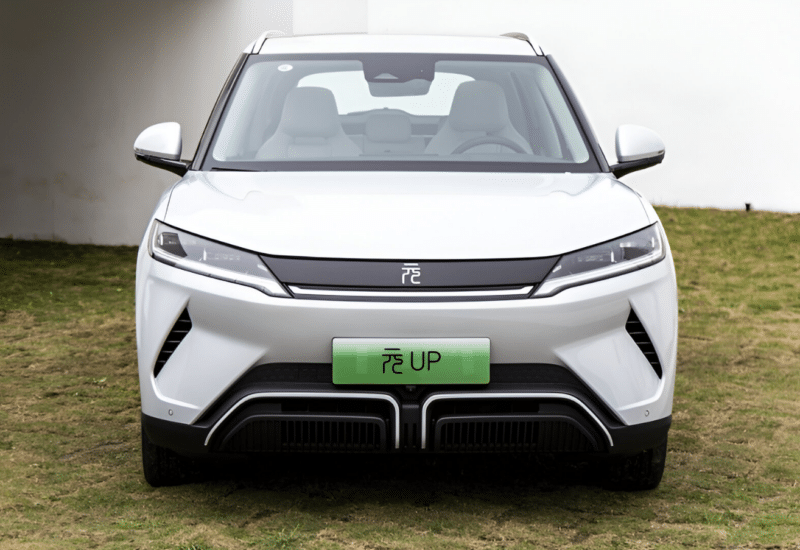

The Yuan UP is built on the e-Platform 3.0, also used on the Atto 3. It has a dimension of 4310/1830/1675 mm and a wheelbase of 2620 mm. It comes with two optional e-motors, with power outputs of 70 kW and 130 kW. Depending on the chosen battery option, ranging from 32 kWh to 45.1 kWh, it can cover distances of 301 to 401 km on a single charge respectively.
Inside the Yuan UP, the cabin showcases a D-shaped steering wheel with a signature Yuan (元) logo with an 8.8-inch LCD instrument cluster. It also features a versatile 12.8-inch center screen capable of rotating.
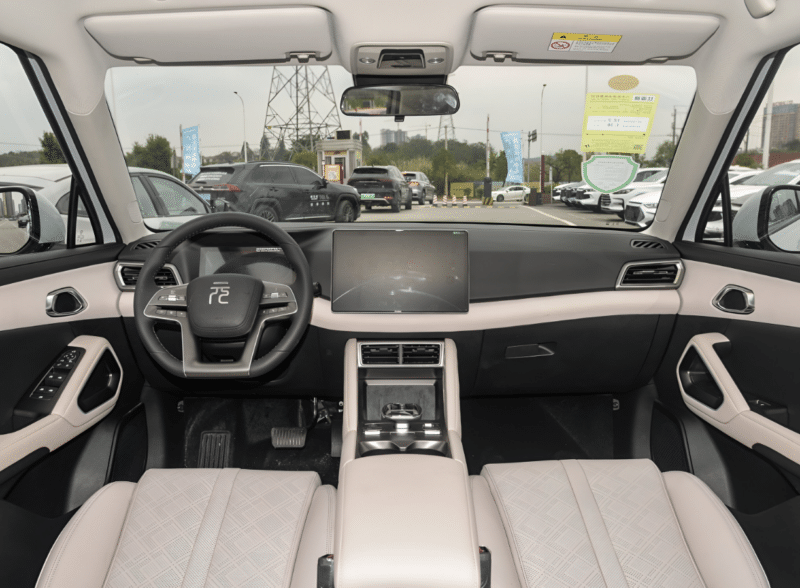
The seats, wrapped in perforated leatherette, offer power adjustments. The center console houses a wireless charging pad, a crystal gear selector, and physical buttons for essential functions. The interior is brightened by a huge panoramic roof and mixed color schemes such as black and beige or pink, charcoal, and light gray. The backseat provides a flat floor for enhanced comfort.
The BYD Yuan UP also boasts a MacPherson suspension in the front axle and a torsion beam in the rear for a balanced and comfortable ride. The Yuan UP has been arriving at BYD dealerships, gearing up for launch. At just 79,800 yuan, we can expect this car to be a hit for BYD.
Source: IT-Home
Yommie
SpeedLimited
- Oct 2, 2013
- 64,174
- 37,188
- Country of Origin

- Country of Residence

China to Implement new evaluation criteria for auto SOEs to boost NEV sector
By Global Times Published: Mar 16, 2024 02:19 PM
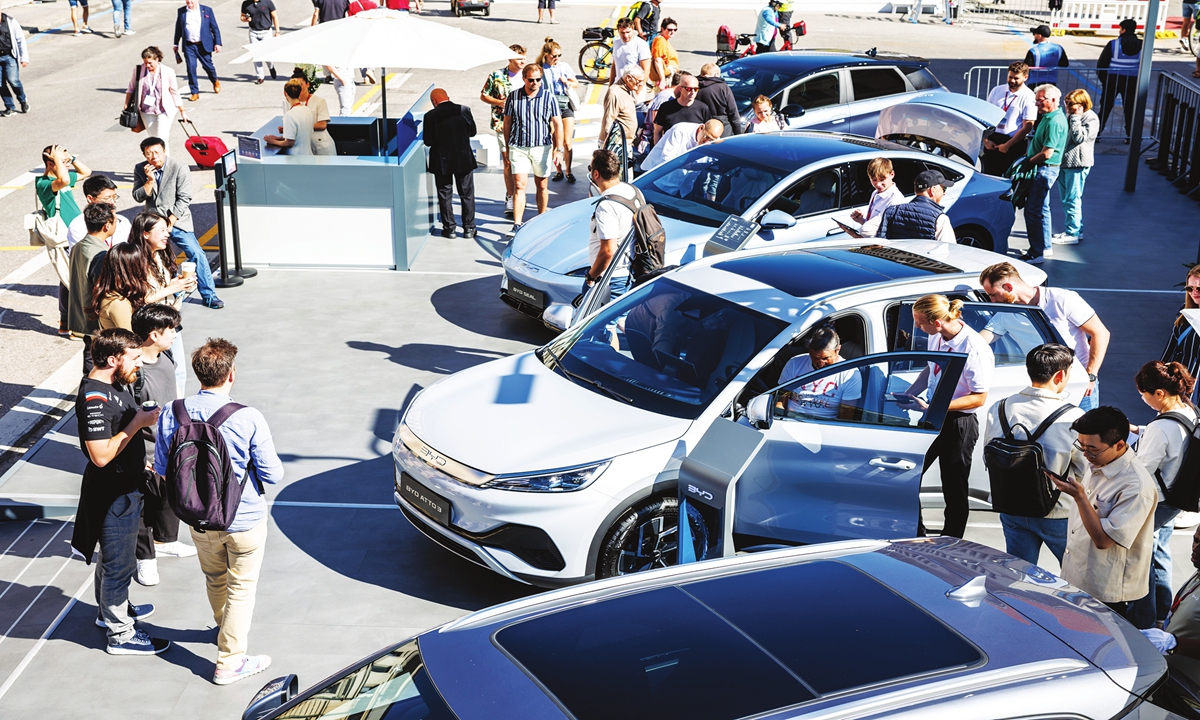
Visitors inspect vehicles at the booth of Chinese manufacturer BYD at the Open Space of the IAA 2023 auto show in Munich, Germany on September 5, 2023. Photo: VCG
China is expected to introduce new evaluation criteria for three centrally-administered auto companies, reported Economic Observer on Saturday, a move that aims to encourage investment and mergers and accelerate the companies’ development in the new energy vehicle (NEV) sector.
The new evaluation criteria for the three centrally-administered state-owned enterprises (SOEs) will include a range of new indicators such as market share, profit structure, technological innovation, and safety production, as per the Economic Observer report.
The three major central auto SOEs are FAW Group, Changan Automobile and Dongfeng Motor Corporation Ltd., all of which are early players in the Chinese NEV sector but have not shown significant growth in recent years.
In 2023, the three centrally-administered auto SOEs made significant strides by investing nearly 36 billion yuan into NEVs ($5 billion), accounting for over 60 percent of their total investment, Gou Ping, vice chairman of the State-owned Assets Supervision and Administration Commission of the State Council (SASAC), said on Saturday.
While centrally-administered auto SOEs possess considerable technological reserves in the NEV domain, cautious investment strategies due to regulatory and other factors have led to them missing out on opportunities resulting from intense market competition, the Economic Observer report said, citing an unnamed insider from the SOEs.
During the recently concluded two sessions, Zhang Yuzhuo, the head of SASAC, stated that SOEs are not developing fast enough in the NEV area and policies would be adjusted for separate assessments of the three centrally-administered auto SOEs.
Experts have pointed out that the existing evaluation criteria for SOEs do not fit the rapidly evolving NEV industry, which requires fast-paced iterations of vehicles and core components. Misalignment has reportedly dampened the investment enthusiasm of these companies, causing them to miss development opportunities, as per the Economic Observer.
The three centrally-administered auto SOEs have set ambitious targets for 2024, with FAW Group and Changan Automobile aiming to achieve NEV sales of 500,000 and 750,000 units, respectively, while Dongfeng Motor Corporation Ltd. plans to fully electrify its leading passenger car brands this year and aims to exceed 1 million units in NEV sales by 2025.
Gou said on Saturday that the centrally-administered auto SOEs will play to heir advantages, utilize their industrial resources and take a correct view toward the gaps and shortcomings in terms of their development in the NEV sector to accelerate transformation.
An SASAC official revealed that in addition to the NEV sector, SASAC intends to develop multi-dimensional evaluation indicators for several strategic emerging industries to promote their development, Economic Observer reported.
Yommie
SpeedLimited
- Oct 2, 2013
- 64,174
- 37,188
- Country of Origin

- Country of Residence


Senior Chinese official says state-owned automakers not moving fast enough on NEVs
China will tweak its policy to give the three centrally-administered automakers a separate assessment of their NEV businesses, a senior official said.
 cnevpost.com
cnevpost.com
Senior Chinese official says state-owned automakers not moving fast enough on NEVs
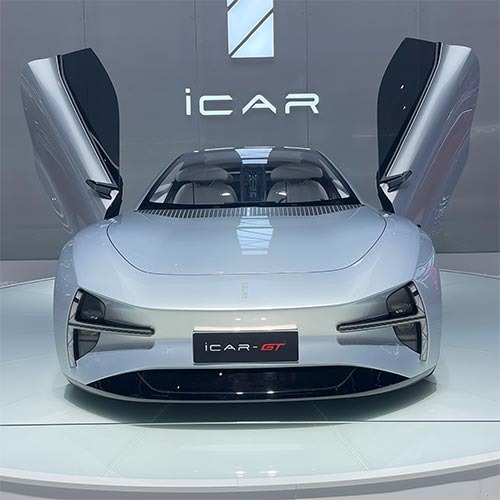
Phate Zhang
Mar 5, 2024 15:07 GMT+8
China will tweak its policy to give the three centrally-administered automakers a separate assessment of their NEV businesses, a senior official said.

(Image credit: CnEVPost)
A senior Chinese official has complained that state-owned automakers in the country are moving slowly on new energy vehicles (NEVs), hinting that more policies are coming.
In terms of regulating state-owned assets, China needs to incentivize companies to innovate boldly and break down some of the institutional barriers, such as in the NEV sector, said Zhang Yuzhuo, chairman of the State-owned Assets Supervision and Administration Commission of the State Council, or SASAC.
Zhang mentioned this in a group interview with the media today, saying that state-owned automakers are not moving fast enough in NEVs, and that the country will adjust its policies to give a separate assessment to the three centrally-administered automakers for their NEV business, according to the Economic Daily.
| Join CnEVPost on Telegram
Zhang explained further:
China's NEV industry has grown rapidly over the past few years, but it's private and foreign companies like BYD (HKG: 1211, OTCMKTS: BYDDY) and Tesla (NASDAQ: TSLA) that are leading the way.Because we noticed that car companies invested a lot at the beginning of their entry into the NEV sector, as is the case with the automotive industry all over the world.
With fuel vehicles still having an advantage, it's not very easy for them to go full speed ahead if current profits are taken into account.
We will come out with policies to break down this barrier and assess the technology, market share, and future development.
For the full year 2023, BYD sold 2,706,075 NEVs at retail in China, ranking No. 1 in the NEV market with a 35 percent share, according to the China Passenger Car Association (CPCA).
Tesla (NASDAQ: TSLA) was second with 603,664 units sold and a 7.8 percent share.
Zhang didn't directly name the three automakers in the interview, but the centrally-administered automakers directly regulated by SASAC are FAW Group, Dongfeng Group and Changan Group.
Of those three, only Changan was ranked sixth in the CPCA's 2023 retail sales rankings for NEVs, with a 5 percent share. Neither FAW nor Dongfeng made it into that top 10 ranking.

Yommie
SpeedLimited
- Oct 2, 2013
- 64,174
- 37,188
- Country of Origin

- Country of Residence

BYD Sales Freefall is TERRIFYING As Chinese EV "BLOODBATH" Destroys Demand!
@Hamartia Antidote
What do you think? Is the CCP attempting to rein in the private automakers to prop up the 3 state owned automakers FAW, Dongfeng, Changan which haven't really been all that successful?
Hamartia Antidote
Elite Member
- Nov 17, 2013
- 39,483
- 22,833
- Country of Origin

- Country of Residence

BYD Sales Freefall is TERRIFYING As Chinese EV "BLOODBATH" Destroys Demand!
@Hamartia Antidote
What do you think? Is the CCP attempting to rein in the private automakers to prop up the 3 state owned automakers FAW, Dongfeng, Changan which haven't really been all that successful?
I wouldn’t write BYD off quickly. However other Chinese EV companies are now in desperation mode as drastic price cuts are forcing them to lower their margins before they have recouped their initial startup expenses…this may lead to them cutting corners. This is going to lead to their doom.
As for government EV makers they of course have deep pockets and possibly a “too proud to fail” backing.
Last edited:
Yommie
SpeedLimited
- Oct 2, 2013
- 64,174
- 37,188
- Country of Origin

- Country of Residence


Tank 330 off-road vehicle enters market at 46,400 USD in China
The Tank 330 was developed as a crowdfunding project.
 carnewschina.com
carnewschina.com
Tank 330 off-road vehicle enters market at 46,400 USD in China
Reading Time: 3 minutes
Dong Yi Chen
March 17, 2024
0

News like this to your inbox or phone?
Weekly summary to your inbox
I want this
Never miss and important news
Get Instant notification once the news is published.
Follow Us
On March 16, Great Wall Motor’s Tank brand officially launched its new Tank 330 model, with a price tag of 330,000 yuan (46,400 USD). This model is based on the Tank 300 Frontier Limited Edition. It is worth mentioning that the Tank 330 is sold in limited quantities through online orders, and the first batch is limited to 1,000 units.


The Tank 330 was developed as a crowdfunding project. Its overall design is boxy with off-road characteristic such as the wide wheel arches, raised engine hood, circular headlights, an external spare tire, and roof racks. It supports off-road, snow, and standard mode driving.
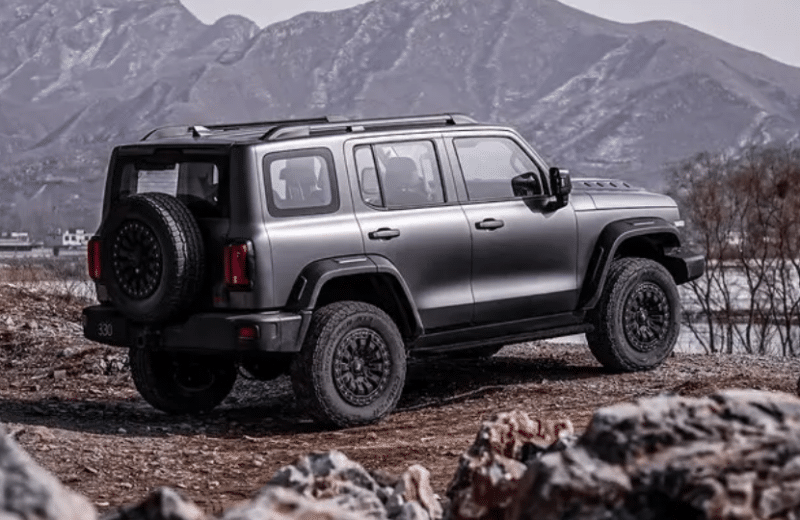
The Tank 330 measures 4772/1970/1960 (1971) mm, with a 2750 mm wheelbase. The tire specification is 265/70 R18. Positioned as an off-road vehicle, the car has an approach angle of 36°, a departure angle of 33°, a minimum ground clearance of 242 mm, and a wading depth of 750 mm.
Additionally, a limited number of level 2 driving assistance functionalities is provided, including lane centering and lane keeping assist. Functions such as front and rear collision warning, automatic emergency braking, lane merging assist, and autonomous parking have been cancelled.
Inside, the cockpit adopts a bold burgundy and black color scheme. The central control screen and full LCD instrument panel are each 12.3 inches in size. The metal air-conditioning outlets are classic. Other configurations include 50W wireless charging, intelligent voice recognition and control, OTA updates, and mobile APP remote control. The front seats support heating and ventilation, while the driver seat comes with massage function. The rear seats also support backrest angle adjustment.

Power comes from a 3.0T turbocharged V6 engine code-named E30Z, with a maximum power of 265 kW and a peak torque of 500 Nm, mated to a 9AT. The engine thermal efficiency is as high as 38.5%, and when paired with a 48 V electric motor, the vehicle’s fuel consumption is 11.9 L/100 km (WLTC). Furthermore, it is equipped with an intelligent four-wheel drive system that can realize two-wheel drive, intelligent four-wheel drive, high-speed four-wheel drive, and low-speed four-wheel drive.
Source: DongCheDi, PCAuto
Yommie
SpeedLimited
- Oct 2, 2013
- 64,174
- 37,188
- Country of Origin

- Country of Residence

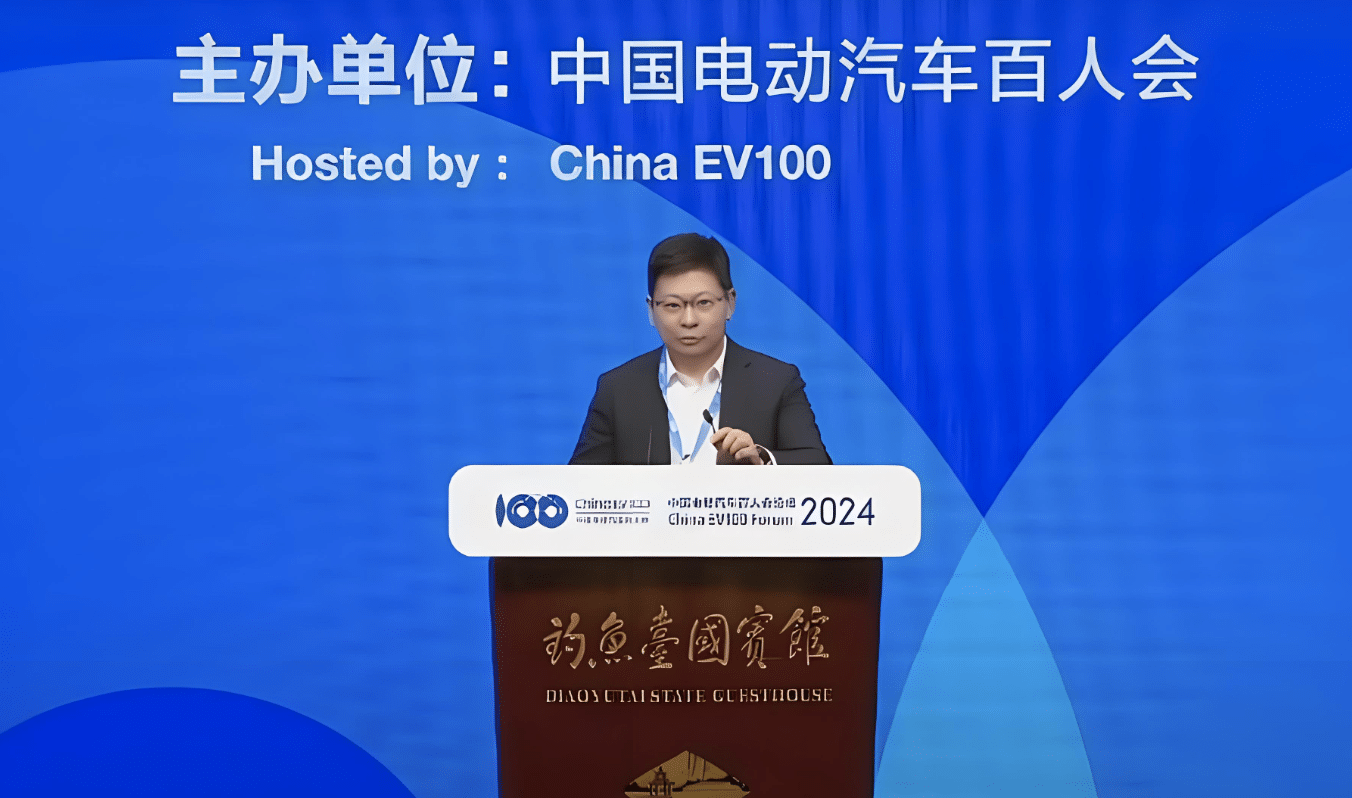
EV100 Forum: China’s vision for new energy vehicle industry
China's EV100 Forum: A roadmap for the industry in China.
 carnewschina.com
carnewschina.com
EV100 Forum: China’s vision for new energy vehicle industry
Reading Time: 3 minutes
Naveed Rastegar
March 18, 2024
0
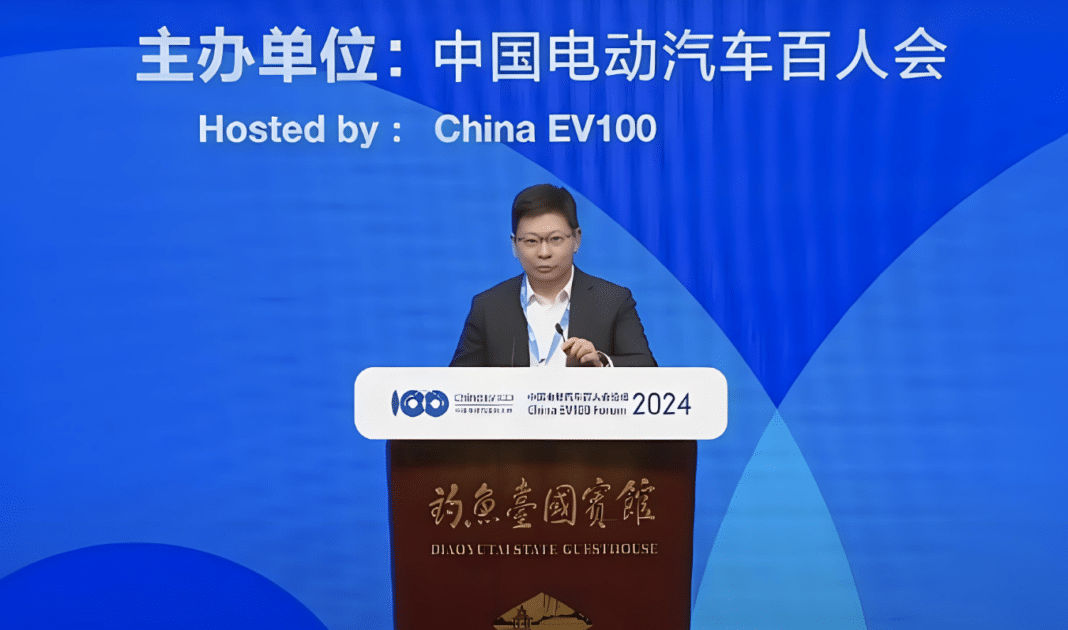
News like this to your inbox or phone?
Weekly summary to your inbox
I want this
Never miss and important news
Get Instant notification once the news is published.
Follow Us
On March 16th, at the China Electric Vehicle People Forum (EV100 2024), Deputy Minister of Industry and Information Technology Shan Zhongde presented on the industry. His opening statement outlined how China has achieved remarkable accomplishments in the field of new energy vehicles (NEVs). However, most of his address focused on the fact that development still faces difficulties and challenges.
In the presentation, Mr. Shan reiterated that domestic efforts are needed to strengthen the development of automotive chips and basic software and continuously improve the adaptability, safety, and charging convenience of NEVs. Mr. Shan pointed out that the opportunities for the development of the new energy vehicle industry outweigh the challenges, and the favorable conditions outweigh the unfavorable factors, filling the industry’s future with confidence.
Shan Zhongde introduced that the Ministry of Industry and Information Technology will strengthen interdepartmental coordination, improve policy measures, and enhance innovation development, system competitiveness, and open cooperation capabilities. It will accelerate the development of intelligent and connected new energy vehicles as new productive forces from four aspects to empower the development of the new energy vehicle industry.
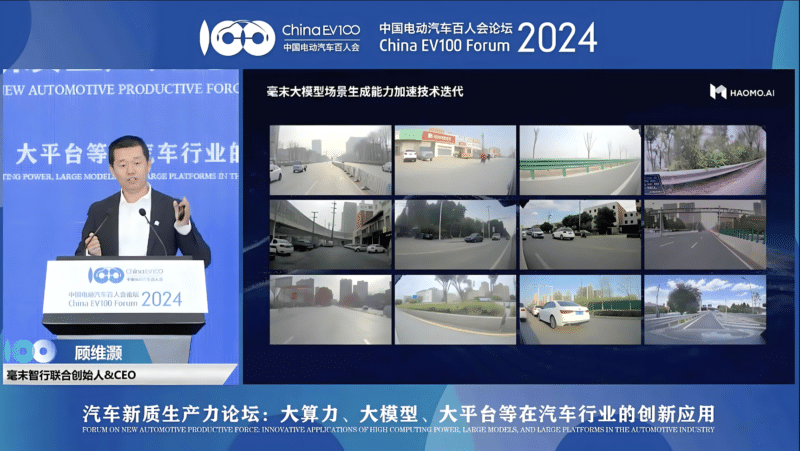 Autonomous driving presentation
Autonomous driving presentationFirst, they will adhere to “innovation-driven development.” They will strengthen the leading technological role of enterprises in scientific and technological innovation, enhance talent gathering, and support leading companies in the supply chain in establishing an innovative system that coordinates technological research, platform support, and demonstration applications. Efforts will be made to address weaknesses, extend advantages, forge new strengths, accelerate the technological research and industrialization of next-generation power batteries, automotive chips, operating systems, and autonomous driving, and enhance the industry’s and supply chains’ resilience and competitiveness.
Second, they will improve the policy system and continuously optimize industrial structure and ecology. They will further strengthen industrial planning and investment guidance, curb blind investment and redundant construction, and accelerate the introduction of regulations on access management for the production of electric vehicles. Pilot projects for group management will be initiated to support leading enterprises in improving quality, reducing costs, mergers and reorganizations, and further increasing industrial concentration. They will guide traditional automobile companies to accelerate transformation based on their technological and channel advantages, open cooperation, and crackdown on unfair competition.
Third, they will increase promotion efforts and deepen cross-domain integration and innovation. They will study and formulate supportive policies for trade-ins of old vehicles for new ones, construction of charging and swapping infrastructure, and carry out activities such as the electrification of new energy vehicles in rural areas and comprehensive electrification of vehicles in public areas. Product quality and safety standards will be further improved, active efforts will be made to expand the consumption of intelligent and connected new energy vehicles, pilot projects for access to intelligent and connected vehicles and vehicle-to-road-cloud integration will be conducted, and the construction of roadside perception and cloud-controlled infrastructure for networked vehicles will be accelerated. Demonstration applications of city-level advanced autonomous driving vehicles will be carried out.
Fourth, they will adhere to international cooperation to assist in constructing a modern industrial system through high-level opening-up. They will guide international alliances of automotive companies, establish third-party technology and policy service platforms for domestic and international use. Meanwhile, they will welcome increased investment and technology cooperation in the automotive industry from companies worldwide in China, share development opportunities, and create with the hopes of creating a better future together.
Source: Youth.cn
Yommie
SpeedLimited
- Oct 2, 2013
- 64,174
- 37,188
- Country of Origin

- Country of Residence

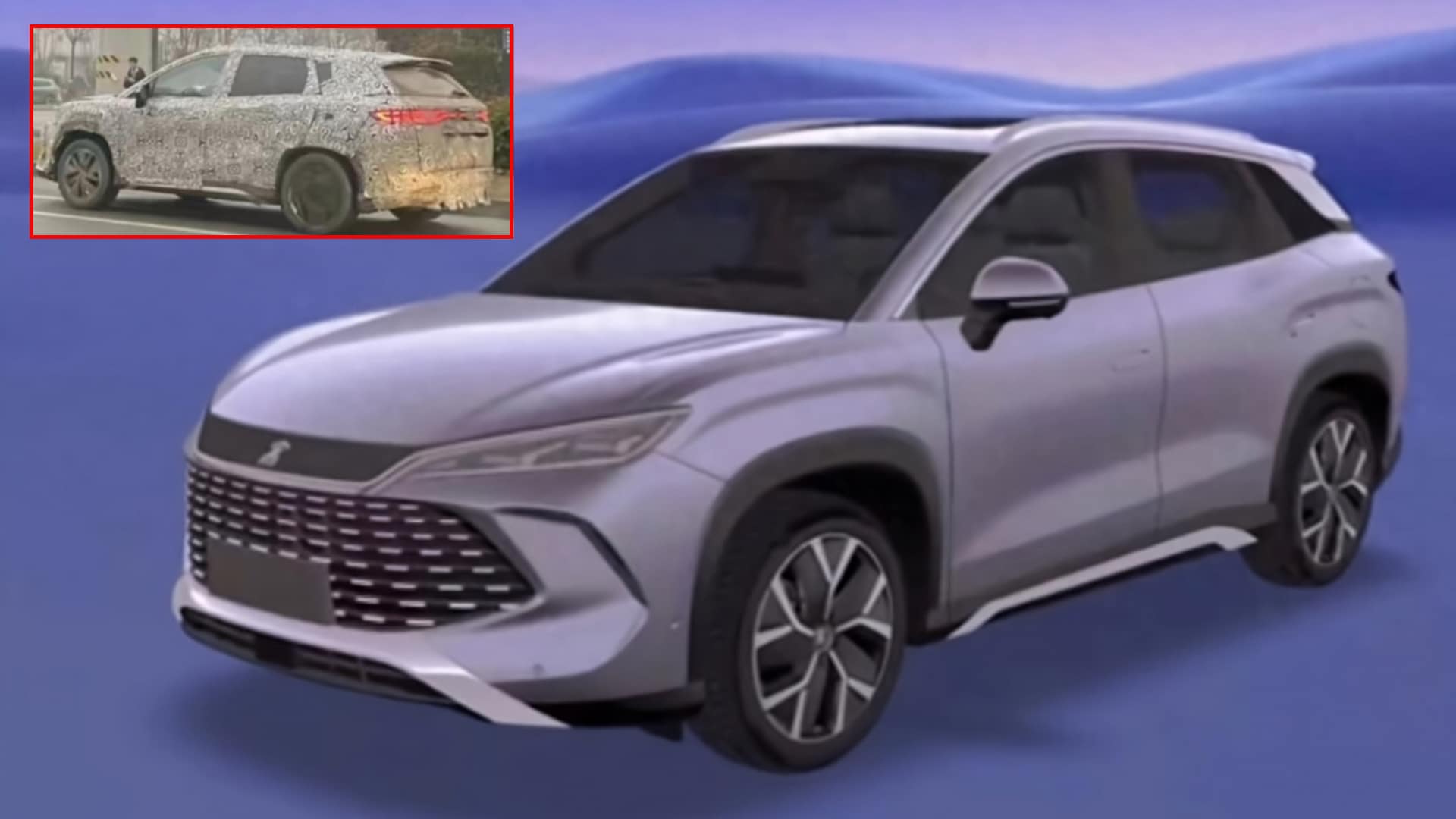
Second-gen BYD Song Plus leaked in China before the launch
The second-gen BYD Song Plus DM-i will enter the market in August this year with a sturdy styling and a fifth-gen BYD’s PHEV powertrain.
 carnewschina.com
carnewschina.com
Second-gen BYD Song Plus leaked in China before the launch
Reading Time: 3 minutes
Denis Bobylev
March 18, 2024
0

News like this to your inbox or phone?
Weekly summary to your inbox
I want this
Never miss and important news
Get Instant notification once the news is published.
Follow Us
The new generation BYD Song Plus DM-i was exposed in render images and spy photos. It adopts the updated “Dragon Face” design language similar to the Qin L DM-i sedan. The new Song Plus adopts the fifth generation of the BYD’s DM-i plug-in hybrid system.
Song Plus DM-i or Song L DM-i
Many Chinese sources called the exposed car BYD Song L DM-i. In their view, it is the PHEV version of the recently launched BYD Song L EV. However, the previously leaked BYD’s product planning showed that the Chinese bestselling brand isn’t working on this car. In contrast, BYD did plan to launch the second-generation Song Plus in China. This vehicle sells as BYD Seal U in some overseas countries.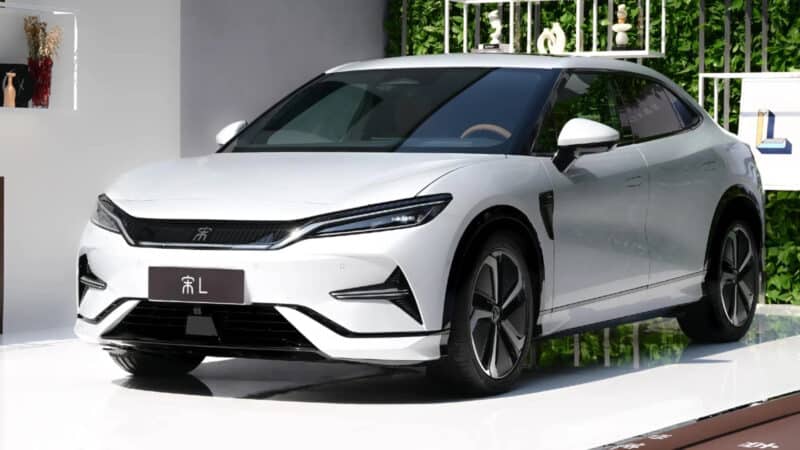 Song L EV
Song L EVThe second argument for the second-gen Song Plus is its clear difference from the all-electric Song L. The exposed car is a brawny crossover with a high beltline and plastic trim encircling the lower part of the body. As for the BYD Song L EV, it looks more like a sporty shooting brake.
More info on new BYD Song Plus DM-i
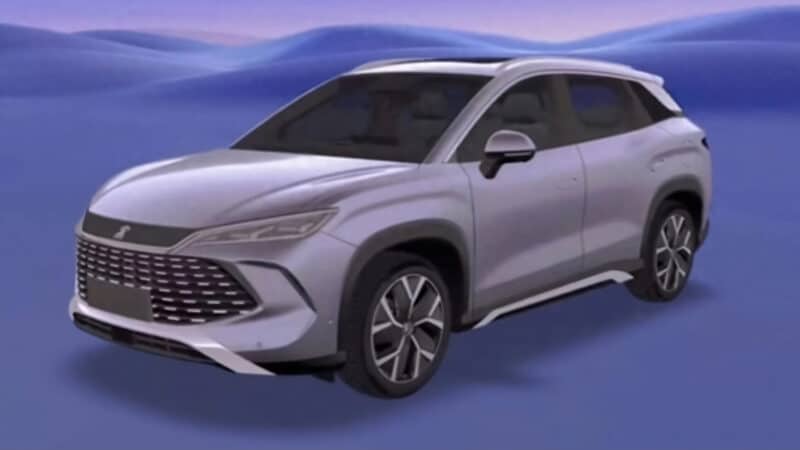
The new BYD Song Plus DM-i was first exposed in the render image that was leaked online. As mentioned, it is a sturdy, mid-size, five-seat crossover. Its front end stays in line with the BYD Qin L. It has a large hexagonal grille with a scale pattern. The front bumper also has functional vents and a trapeze-shaped air intake. The Song Plus DM-i adopts the elongated headlights joined by the chrome-plated element with 宋 (Song) logo on it.
The second-gen Song Plus DM-i also has wide wheel arches and five-spoke rims. Its B- and C-pillars are blackened to create a suspended roof design. Another fine feature of the Song Plus DM-i is its retractable door handles, which reduce drag during driving. Inside, the Song Plus DM-i has a huge floating screen.
In spy shots, we can see that the new Song Plus DM-i stays in line with the leaked render image. The spied car is finished in a light-blue color, which BYD officially calls “Azure”. From the back, the new Song Plus DM-i has a single taillight unit and a roof spoiler. It also has tinted rear windows. Otherwise, it is a traditional SUV that is clearly bigger than the current Song Plus DM-i.
The powertrain of the BYD Song Plus DM-i has yet to be revealed. However, it will likely adopt the brand’s fifth-generation PHEV system. It adopts a 1.5-liter ICE paired with an electric motor. according to the leaked product planning, the new Song Plus will enter the market in August. More on the new BYD Song Plus DM-i as we get it.
Source: Weibo
Yommie
SpeedLimited
- Oct 2, 2013
- 64,174
- 37,188
- Country of Origin

- Country of Residence

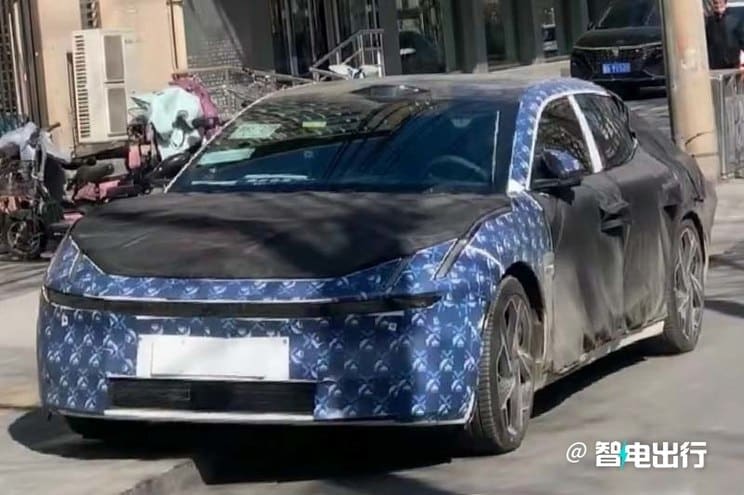
Lynk & Co goes all electric with the Zero
Lynk & Co Zero to unveil next month, the brand's first all electric car will go on sale later this year.
 carnewschina.com
carnewschina.com
Lynk & Co goes all electric with the Zero
Reading Time: 3 minutes
Mark Andrews
March 18, 2024
1
 Lynk & Co Zero spy shot
Lynk & Co Zero spy shotNews like this to your inbox or phone?
Weekly summary to your inbox
I want this
Never miss and important news
Get Instant notification once the news is published.
Follow Us
No, you’re not reading an article from four years ago. Lynk & Co will unveil an all new electric car believe to be called the Zero at the European Design Center in April. The car goes by the internal code name of E371 and should officially launch around the middle of the year priced between 200,000 and 300,000 yuan (27,800 to 41,700 USD).
For those with a long memory the Zero concept was shown by Lynk & Co at the 2020 Beijing Auto Show which due to Covid was delayed until September of that year. That car by the time it reached production in 2021 had become the Zeekr 001.
Ironically the new Zero seems to be quite closely related to the recently revamped Zeekr 001. It will ride on the same 800V architecture platform and will be quite similar in dimensions. The Zero is expected to be over five meters long, around 2 meters wide and have a wheelbase of about three meters. Spy shots confirmed by a teaser image taken from a Lynk & Co internal conference confirm that the Zero is a sedan with fastback styling and that it adopts the same Lynk & Co family design as the latest Lynk & Co 07 EM-P.
 Spy shots
Spy shotsInformation about the European Design Center unveiling comes from a shot of a slide in Lynk & Co’s internal presentation about the new car and we’re really not too sure what this means. It could simply mean it will be unveiled at an internal event at the Geely Design Center in Gothenburg, Sweden or alternatively the car might be shown at the Milan Design Week which will be held in April.
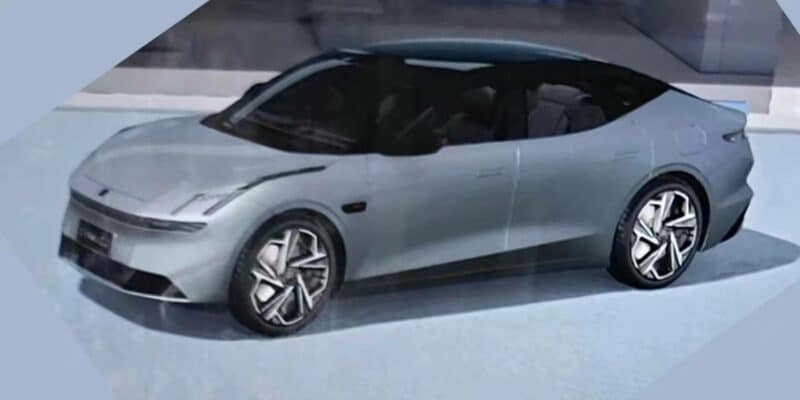 Rendering of what the Lynk & Co Zero might look like
Rendering of what the Lynk & Co Zero might look likeThe Zero will unveil a number of new features for a Lynk & Co car. Firstly there will rear wheel steering and the car will be able to crab walk and undertake tank turns. There is what Lynk & Co refer to as an AI digital chassis and the car will have CDC electromagnetic suspension and dual-chamber air suspension to achieve a magic carpet like ride. Spy shots show an active rear wing at the back. Human Machine Interface computing power will come from a new self-developed E05 car chip which is meant to outperform the Qualcomm Snapdragon 8295 chip in terms of computing power.
Spy shots of the interior show that there is a long embedded LCD instrument screen along with a floating narrow bezel central console screen. Like the 07 EM-P and 08 EM-P the car should come with the Lynk Flyme Auto Meizu HMI system.
Interior spy shot
Lynk & Co is a brand jointly developed by Geely and Volvo and founded in 2016. Initially they only sold ICE cars but quite quickly introduced PHEVs. Until recently they have largely been known for SUVs with just a sole sedan, the 03, which has now been joined by the 07 EM-P.
Editor’s note:
The Zero concept becoming the Zeekr 001 took everyone by surprise. Back in 2021 I interviewed Stefan Rosén, vice president Lynk & Co Design, and he claimed that the Zero concept was from the beginning designed as a new brand. Commentators however were not convinced and the move created a lot of questions about the future of the Lynk & Co brand as the world transitions to an all electric future. The new Zero would seem to be that answer but if Zeekr isn’t an electric Lynk & Co what exactly is the difference between the two brands? That seems to be a conundrum that Geely is increasingly giving us with the proliferation of brands in its portfolio.Sources: Autohome, IT House, Xinchuxing
Users who are viewing this thread
Total: 1 (members: 0, guests: 1)
Pakistan Defence Latest
Country Watch Latest
-
-
-
-
Why India Deliberately kept Weakened Bangladesh’s Military | InShort (5 Viewers)
- Latest: AbuShalehRumi
